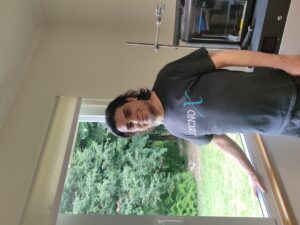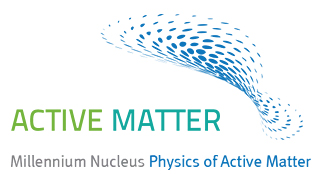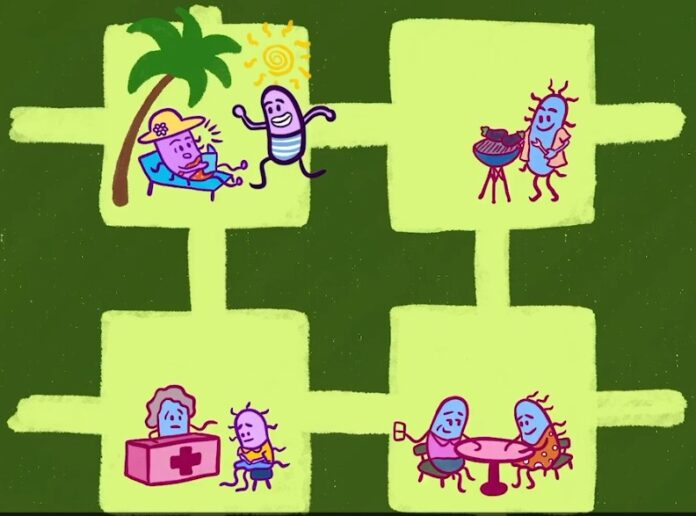Juan Keymer is a researcher at the Millennium Nucleus Physics of Active Matter (DFI-FCFM), also an academic at the University of Aysén, and an expert in ecology on a chip who is studying the behavior of bacterial collectives in mini-laboratories in which he reproduces their natural ecological niche to see how they compete to colonize it. The results of his work promise to have an impact on ecology, environment, and medicine.
Whether in the southern forest, desert, or coast, living beings move across the landscape in search of the best opportunity to survive.
In the process, they may die, survive or, ideally, thrive and reproduce. To do this: is it better to move individually or collectively? to exploit the landscape and take advantage of what it offers, competing for its nutrients? or to explore it and see if there are better opportunities to thrive and colonize beyond it?
At a microscopic level, this dichotomy between competition and colonization also exists. To study how microorganisms and bacteria behave in different landscapes, Juan Keymer, a researcher at the Millennium Nucleus Physics of Active Matter, also an academic at the Aysén University, and an expert in ecology on a chip, creates mini-laboratories or microfluidic devices, the size of stamp, which contains diverse ecological landscapes in which he uses the power of the experimental biophysics to understand how these collectives move and what are their dynamics of colonization of spaces.
In their latest research, published in BMC Biology, Keymer and his team designed landscapes on a chip that, just like a real one, reproduces ecological patterns every few spaces so that individuals can eat or feed.
They placed two groups of bacteria in them – Escherichia coli and Pseudomonas aeruginosa – to see how they behave in the landscape. “We created these landscapes on a chip in the simplest way possible, with an island or pool where bacteria could live and a one-dimensional archipelago where we could place islands. In addition, we added biological connectors or corridors, just like in a real landscape. Then, we inoculated the chip with motile, swimming bacteria and studied how these ‘shoals’ of bacteria explored this landscape,” he says.
Learn more about Juan Keymer’s research in this animated capsule, funded by the Millennium Science Initiative, ANID Centers, Ministry of Science.
 Results
Results
The results showed that E. coli is “a fugitive and exploratory species, while Pseudomonas aeruginosa is a slower colonizer, but a superior competitor; an exploiter of the landscape, and that both managed to coexist and colonize the landscape because they could explore and exploit it, respectively,” says the ecology and evolutionary biology Doctor.
These results show that the relationships of proximity or distance (adjacency) established with the structures and individuals of an ecosystem are crucial to the successful colonization or survival of microorganisms and their coexistence in the landscape.
The last became evident when they put the same bacteria in a test tube. In this case, E. coli had no chance to survive because it had no options to explore, which is its quality. “When we started the experiment (in the tube), after 12 hours, we had a lot of E. coli, but in 48 hours, the Pseudomona had colonized everything. That occurs because if the environment is homogeneous and there is no way to explore elsewhere, it doesn’t matter if it’s good at moving and jumping from here to there. It will have no chance to outlive. The Pseudomona is a slower colonizer but a better competitor and will always win. Nevertheless, when there is an adjacency relationship, E. coli can get where Pseudomona cannot go – because it is too slow- and there, it can thrive and colonize those spaces,” Keymer explains.
This knowledge promises to have implications in ecology and the environment since they show how certain biological phenomena – such as adjacency – could be helpful for the communities of living beings so they can thrive in ecosystems that are increasingly more dynamic, fragmented, and changing due to climate change. It could also have implications in medicine since similar phenomena occur at the level of cells and tissues “and could help us better understand how a wound heals or how it forms a living being since what we saw during this work is that if I can to draw the habitat and assemble islands in different.


